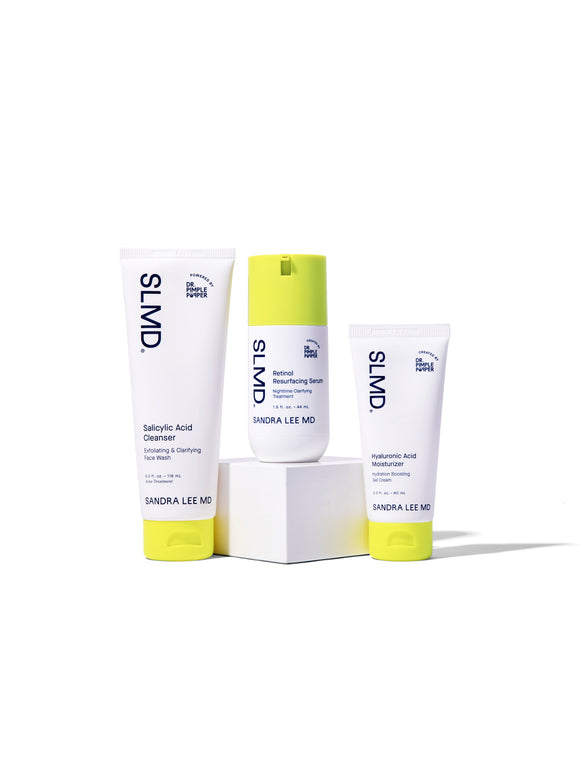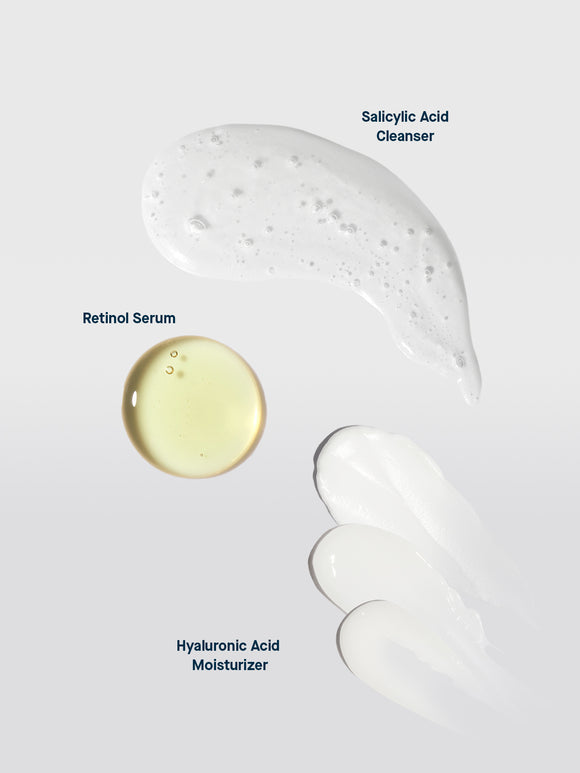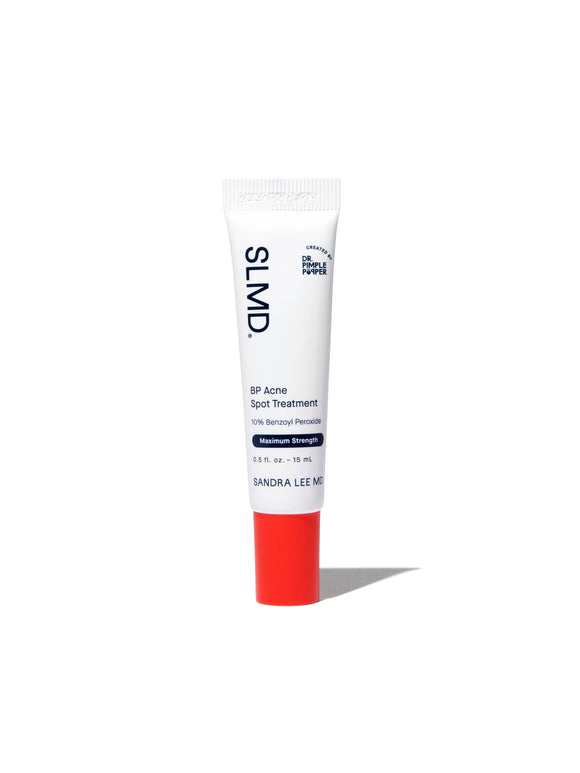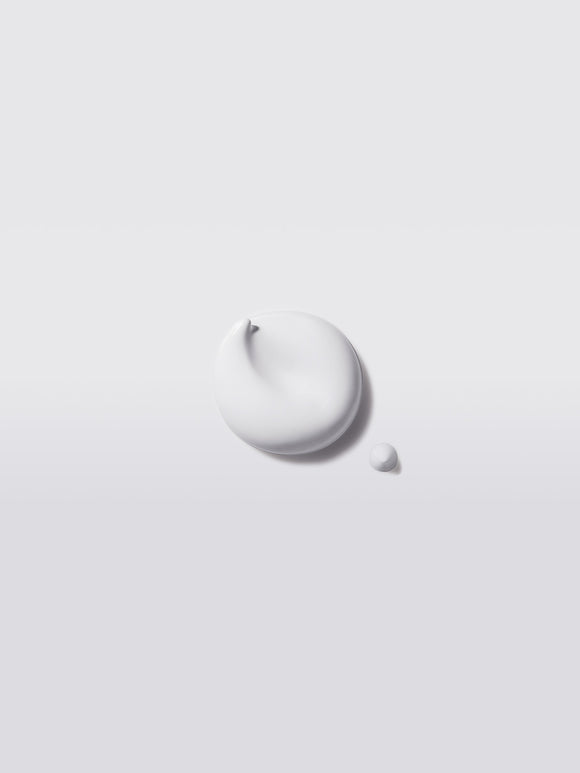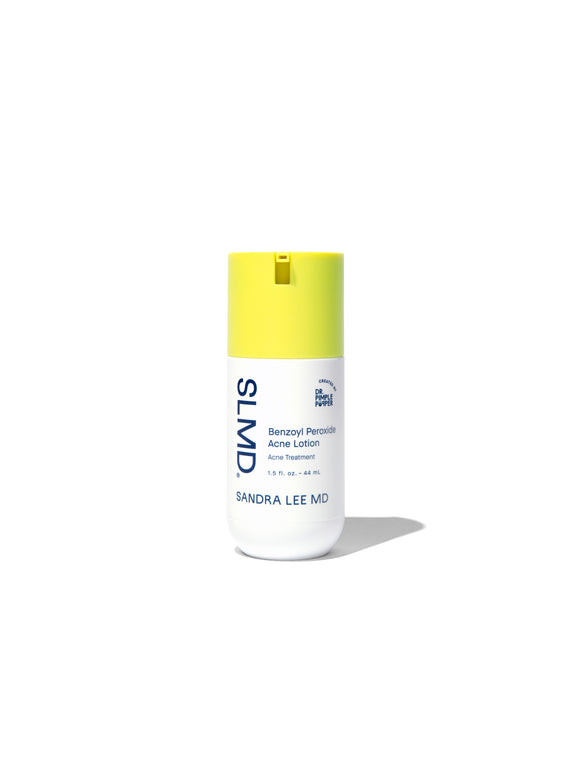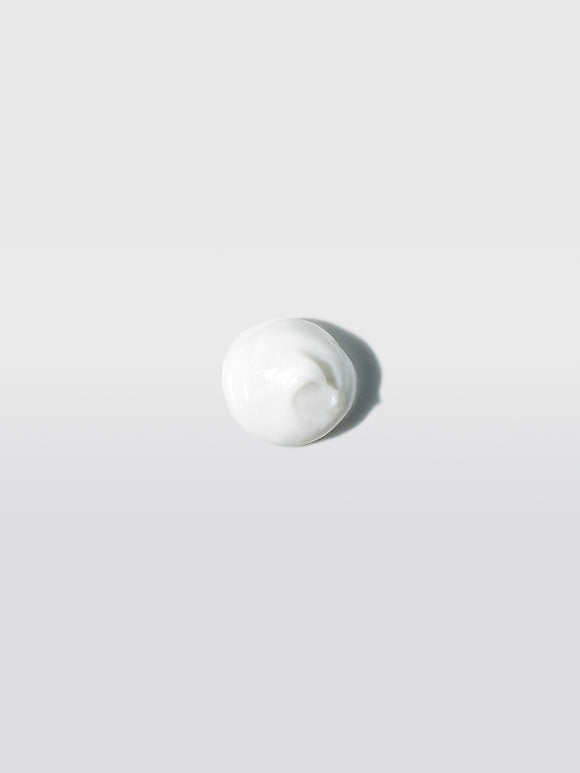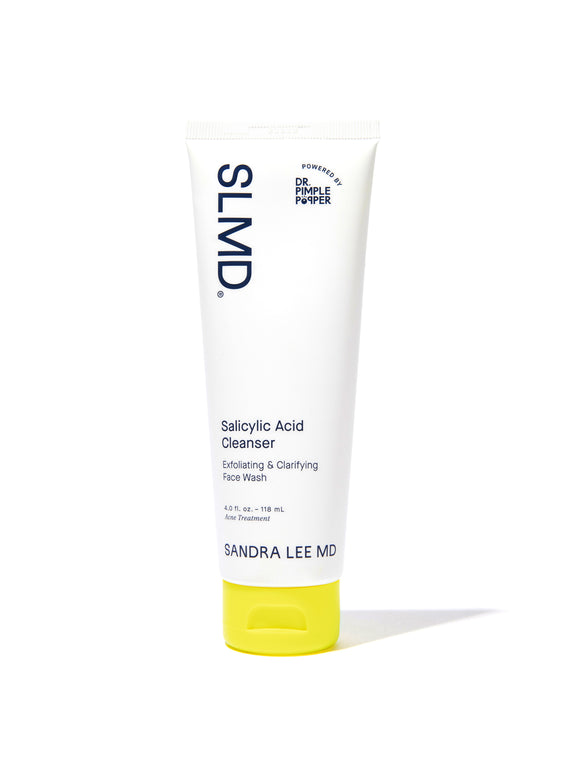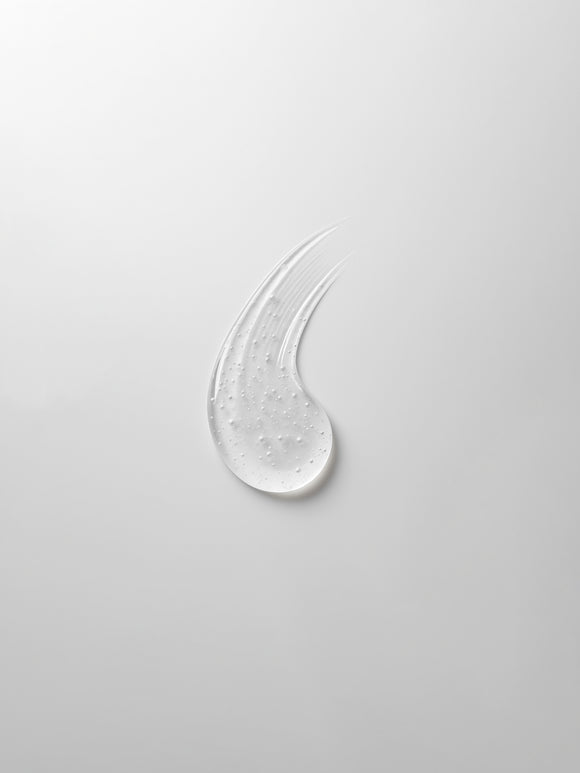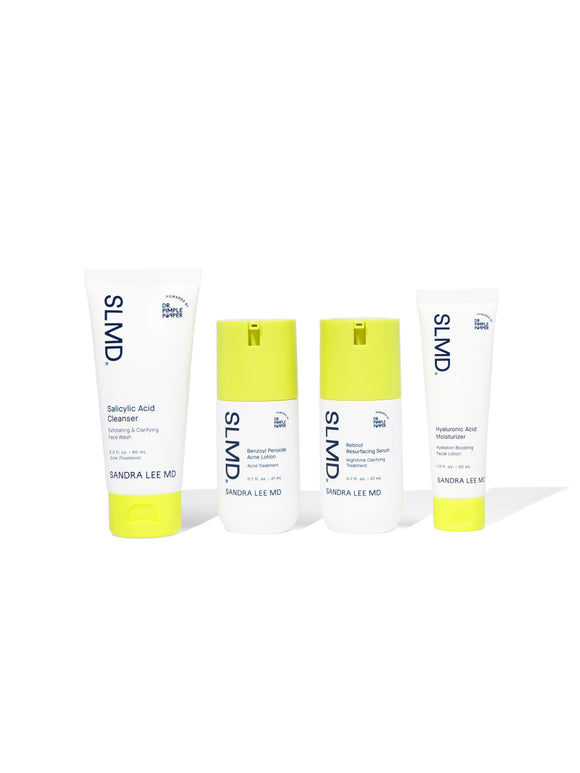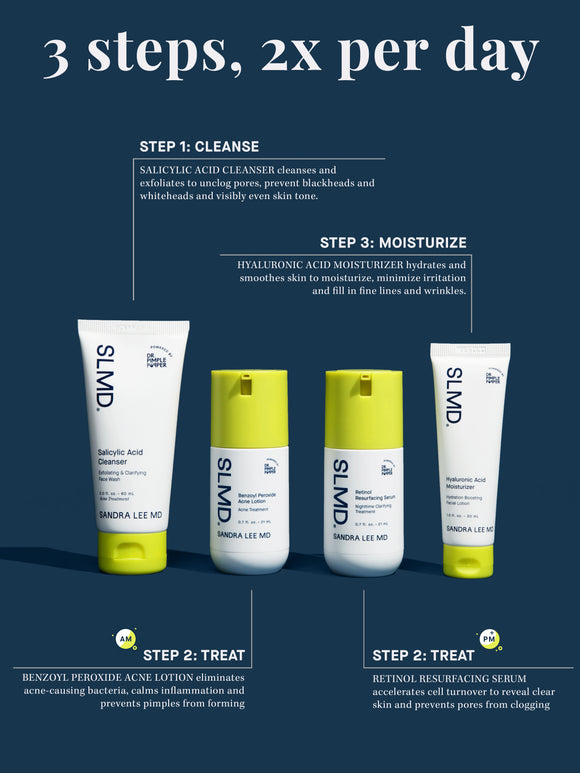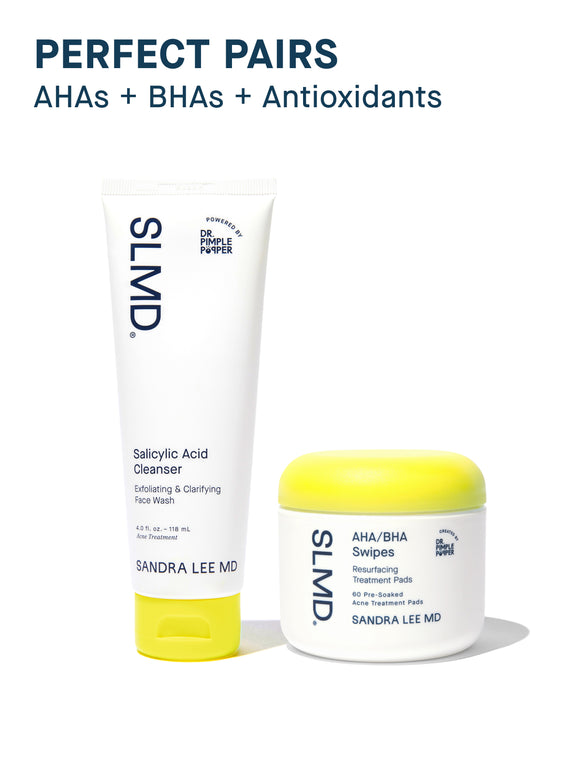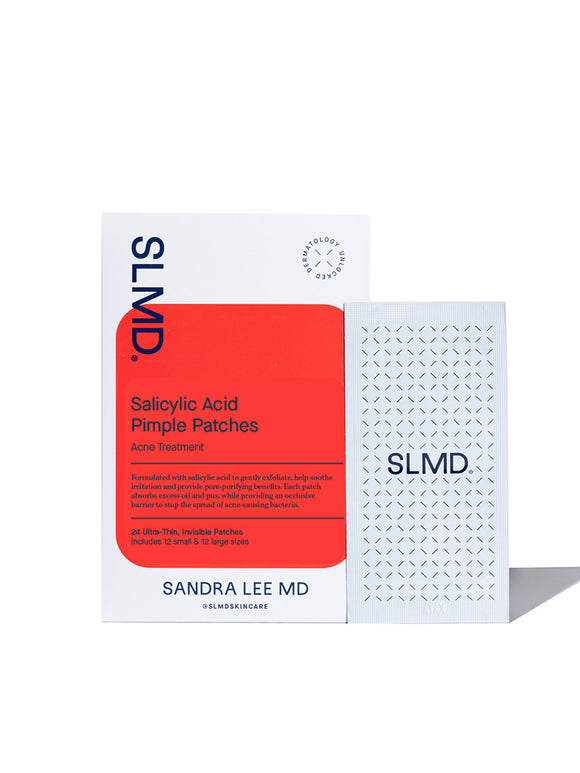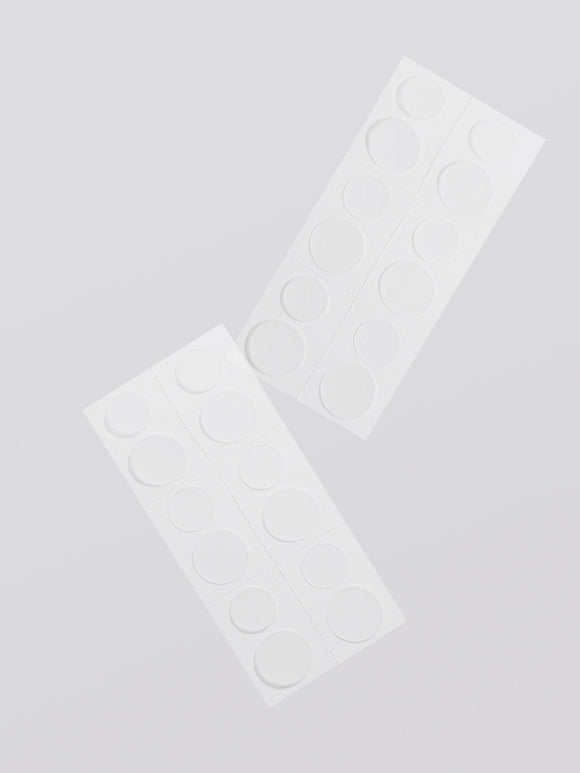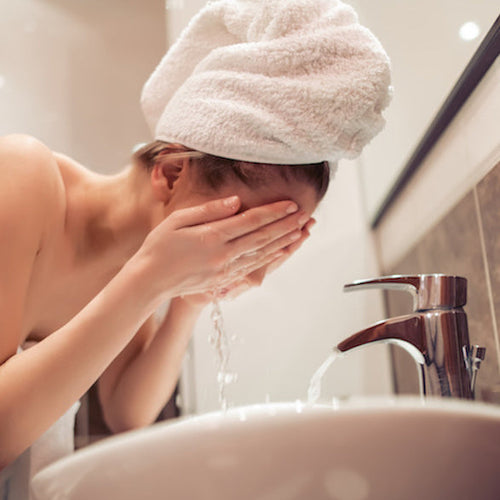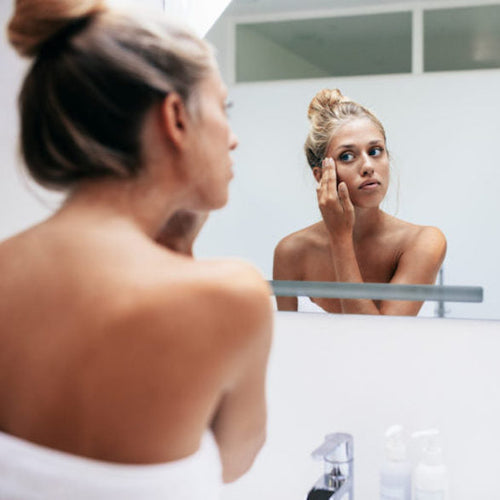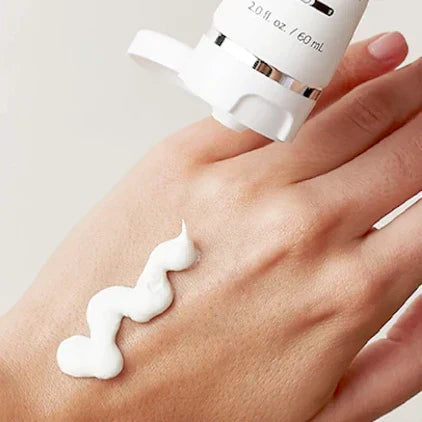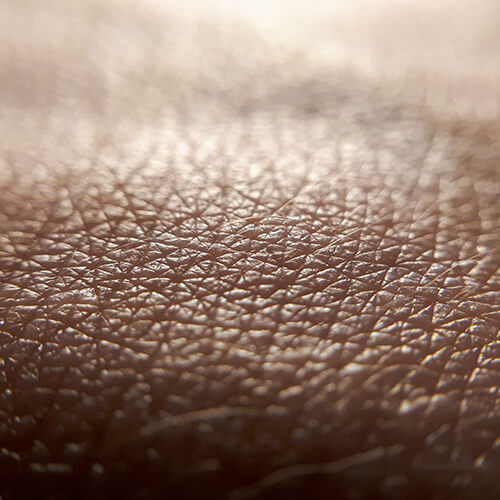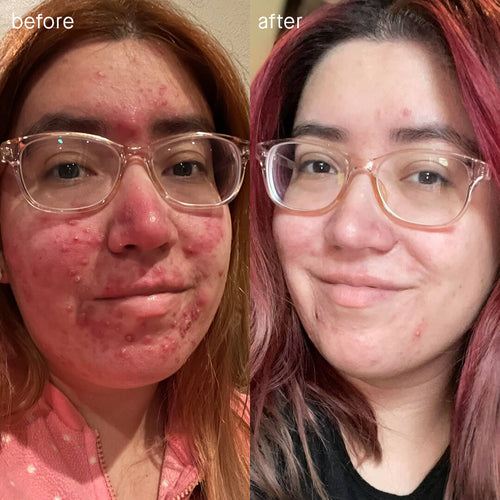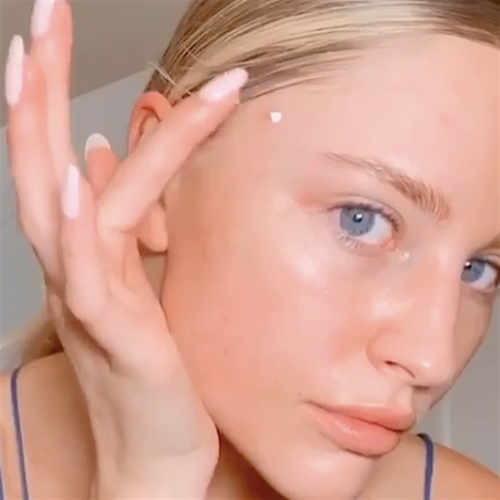
Preventing Period Pimples: Does Cycle Syncing Skincare Work?
Dr. Pimple Popper shares her pro tips for clear skin all month long.
Published:
4 minute read
Breakouts before your period aren’t random — they’re hormonal. As estrogen, progesterone, and testosterone shift throughout the month, your skin responds in ways that can leave you dealing with dullness one week and breakouts the next.
That’s why more people are exploring cycle syncing skincare: timing their routine to each phase of their cycle to help reduce hormonal acne flare-ups.
So, does it work? According to dermatologist and SLMD founder Sandra Lee, MD (aka Dr. Pimple Popper), understanding your cycle is the first step toward creating a skincare strategy that helps keep breakouts in check all month long.
Fast Facts: Menstrual cycle skincare for hormonal acne
- Your skin changes along with your hormones each month
- Some phases are more breakout-prone than others
- A consistent acne routine can be timed for extra support
- Timing certain treatments may help support skin health
- Lifestyle factors beyond skincare can also influence breakouts
Article Quick Links
Syncing your skincare to your monthly cycle
Because hormone levels rise and fall throughout the month, hormonal acne often:
- Follows a predictable monthly cycle
- Shows up in the same areas, like the chin and jawline
- Flares at the same points each month
The good news? Once you understand your cycle, you can plan your skincare routine around it instead of letting breakouts catch you by surprise. Here’s how Dr. Lee recommends getting started:
1. Track your cycle
Use a period app or calendar to learn your phases. Knowing when hormone levels shift helps you prepare your skin instead of reacting after breakouts appear.
2. Build a consistent foundation routine
Dr. Lee recommends products that keep pores clear, protect the skin barrier, and support cell turnover:
- Salicylic acid to exfoliate and unclog pores
- Retinol to boost cell renewal and even skin tone
- Sunscreen to protect against UV damage and post-acne marks
If your acne tends to worsen at certain points in your cycle, start with the SLMD Acne System to gain control before customizing for each phase. Once you’ve got your acne under control, you can switch to a maintenance regimen, like After Acne®.
Dr. Pimple Popper's Cycle Syncing Acne Picks
Menstrual cycle skincare: 4 phases
Dr. Lee recommends keeping a core routine consistent throughout the month:
- AM: SLMD Salicylic Acid Cleanser, Daily Moisturizer with SPF 15
- PM: SLMD Salicylic Acid Cleanser, Retinol Resurfacing Serum, Hyaluronic Acid Moisturizer or Facial Moisturizer with Vitamin C
Then, customize based on your cycle phase:
Menstruation (Days 1–6)
- What’s happening: Estrogen and progesterone levels drop, often leaving skin dry, sensitive, or inflamed.
- Skincare focus: Keep skin hydrated and avoid aggressive treatments — it’s a time for skin barrier support.
- Adjustments: None. Stick to your core routine.
Follicular Phase (Days 6–12)
- What’s happening: Estrogen begins to rise, boosting collagen and hydration — your skin often looks its best now.
- Skincare focus: Maintain healthy skin while preventing clogged pores.
- Adjustments: Add SLMD AHA/BHA Swipes 2–3x weekly for light exfoliation.
Ovulation (Days 13–16)
- What’s happening: Testosterone peaks, increasing oil production and the risk of clogged pores.
- Skincare focus: Keep pores clear and stop mid-cycle breakouts before they start.
- Adjustments: Add SLMD Benzoyl Peroxide Acne Lotion and consider a deep-cleaning mask. Spot treat with SLMD SA Acne Spot Treatment, BP Acne Spot Treatment, or Salicylic Acid Pimple Patches as needed.
Luteal Phase (Days 17–28)
- What’s happening: Estrogen drops while progesterone rises, triggering PMS breakouts along the chin and jawline.
- Skincare focus: Use targeted treatments to help prevent and calm hormonal breakouts.
- Adjustments: Keep using Benzoyl Peroxide Acne Lotion for treatment, increase AHA/BHA Swipes to daily (if tolerated), and spot treat with salicylic acid or benzoyl peroxide as needed.
Lifestyle tips for hormonal acne
Skincare products play a big role in preventing breakouts — but lifestyle habits matter, too. Research shows that stress, sleep, and diet can all influence hormonal acne flare-ups. Here’s how to support your skin from the inside out:
- Prioritize sleep: Aim for 7–9 hours each night. Lack of sleep can raise stress hormones like cortisol, which may worsen breakouts.
- Manage stress: Yoga, meditation, or even daily walks can help keep stress — and stress hormones — in check.
- Choose balanced nutrition: Diets high in sugar and processed foods can spike insulin, which may contribute to hormonal acne in some people.
These healthy habits won’t replace a good skincare routine, but they can help your treatments work better.
Cycle syncing & hormonal acne: your top questions answered
Q: When during the menstrual cycle are breakouts most likely?
A: Breakouts tend to peak in the latter stages — the luteal phase (pre-menstruation) — when hormone shifts increase oil production and inflammation.
Q: Is cycle syncing skincare safe if I’m on hormonal birth control?
A: There’s no harm in doing so, but hormonal contraceptives suppress the natural hormone fluctuations cycle syncing relies on. Instead, dermatologists recommend a consistent, proven acne regimen for best results.
Q: Why do I break out at certain times of the month?
A: Breakouts often flare the week before your period due to hormonal shifts that drive increases in oil production and inflammation.
Q: What skincare steps help most during PMS breakouts?
A: In addition to your regular routine, gentle chemical exfoliation and consistent use of spot treatments for 1–2 days before your period can help reduce inflammation and speed recovery.

Dr. Lee's Last Word
There’s no harm in tailoring your routine around monthly hormonal shifts — just keep in mind that consistency with proven ingredients is what makes the biggest difference long-term.



